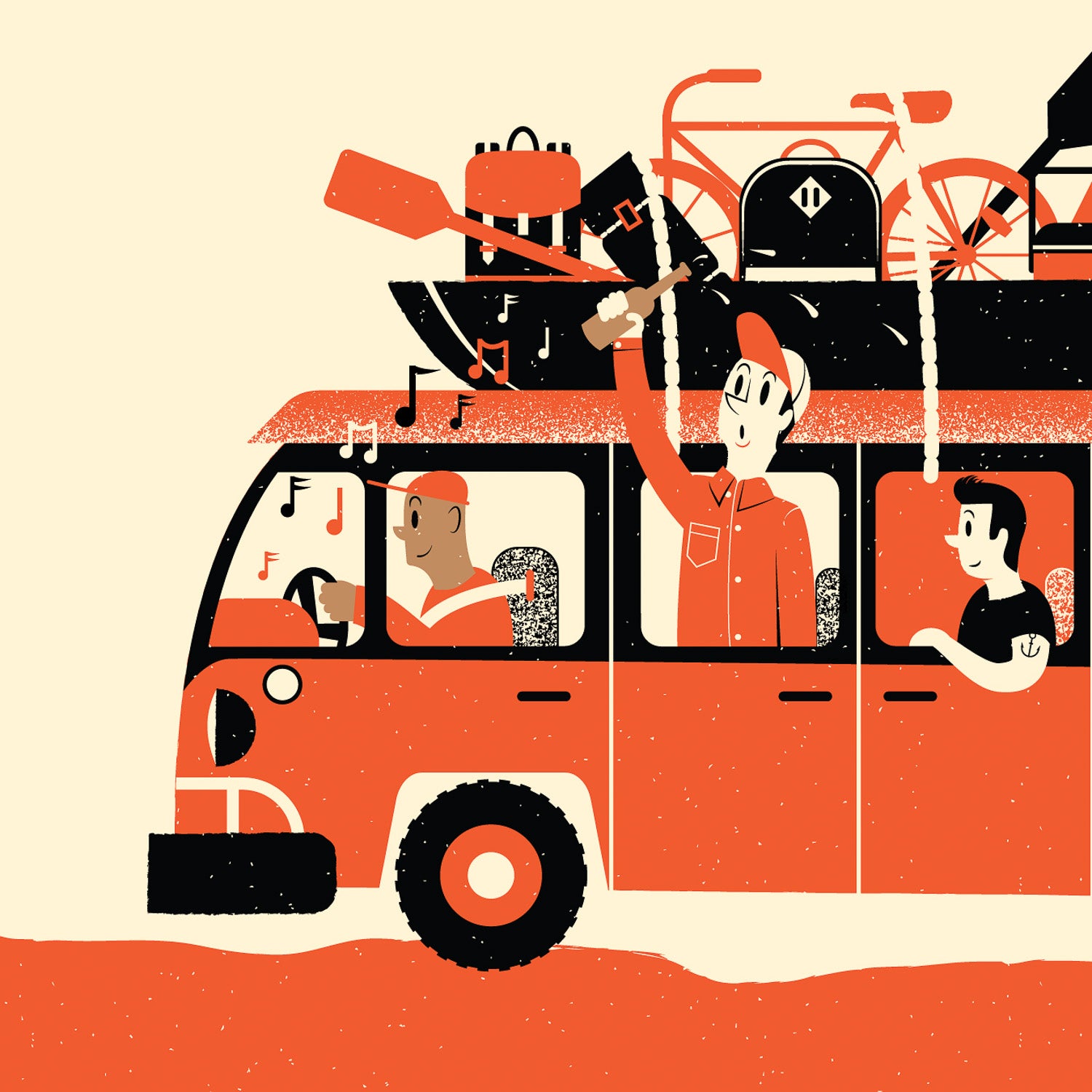Last Wednesday, I bought a truck. Friday morning, I loaded it up with camping gear, my dog, and a girl, and drove to Baja. By lunchtime, we had a beach all to ourselves. Baja isn’t scary or difficult.��It’s the easy, uncrowded beach camping experience you’ve been looking for.
I’ve lived about 145 miles from the Mexican border for nearly five years. But for some reason, I've just never made it to Baja. I’d like to think it wasn’t the exaggerated horror stories about carjackings, cartels, and murders that kept me away, but they probably conspired with the��time suck of a border crossing, buying car insurance, and a general fear of hassle to make other destinations easier to say yes to.��
Then last week I bought an old Land Rover Discovery from my friend Sinuhe Xavier, the creative director of . Custom built for extended off-road travel over extreme terrain, it’s the kind of vehicle that demanded an immediate shakedown somewhere challenging��and somewhere new. Baja it was.��
I invited a girl, begged GPS coordinates for a good beach from Sinuhe, scrambled to get the truck smogged and registered, and took Wiley past the vet for a health certificate. A quick text to IndefinitelyWild contributor Ty Brookhart, who just got back from a 10-day 4×4 trip through Baja with his wife and two bad dogs, confirmed that dollars were accepted everywhere. I spent all day Thursday queuing up stories for the time I’d be gone, then threw my camping gear in the truck, took a girl I’d just met on Bumble out for dinner, then turned in to get a few hours of��sleep before an early departure.��
We hopped in the car at 4 a.m, with a tent, a sleeping pad, a sleeping bag, a little dog food, and our passports. I hadn’t even checked the tire pressures on the Land Rover, much less gone over it to select which tools I might need if it broke down. We had no water, no food, no booze, no extra gas, and not even a map of anything south of the border.��
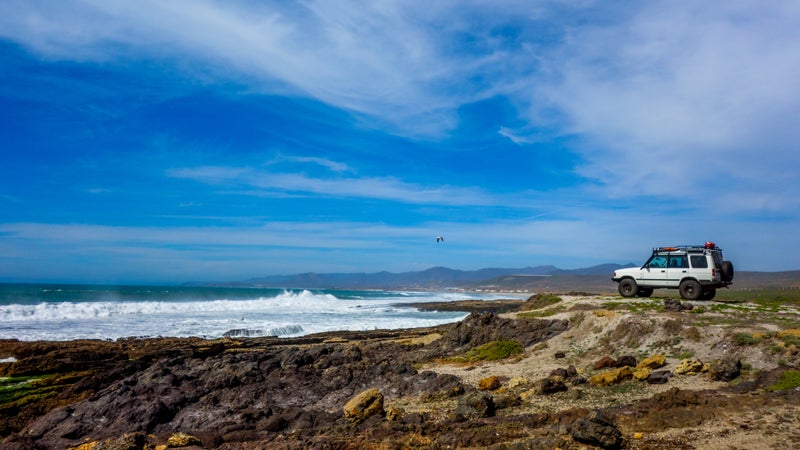
Down the 5 and though the border, the agent on the Mexican side looked annoyed when I stopped in front of him. I offered him our passports, he shrugged, and we drove on without any sort of document check, vehicle inspection, dog paperwork once-over, or the opportunity to purchase Mexican vehicle insurance that I was expecting. Oh well.��
My first impression of Mexico was how nice its roads are. Highway 1 runs from the border��all the way down to Cabo San Lucas, 1,600 miles away at the southern tip of the peninsula. As far as Ensenada—an hour’s drive—it’s a toll road, and it’s perfectly paved in fresh asphalt. It was a��huge relief after two hours riding on 33-inch mud terrains over Southern California’s crumbling concrete rain grooves.��
We figured we’d stop in Ensenada for gas, breakfast, a map, groceries, and water, before heading further south to find a good beach. The groceries were easy and��gorditas for breakfast were delicious, but we discovered we couldn’t buy booze before��10��a.m. and��then both the jerry can and map proved virtually impossible to find in the town center. After checking every local hardware store, and every Oxxo (a local convenience store), we gave up and just decided to hit the highway. On the way out of town, we passed a heavy equipment supply and I ran in, drew a picture of a gas can, then walked out a few minutes later $10 poorer, and armed with 20 liters more fuel range. We even found a 7-11 with one last paper map of Baja gathering dust on a back shelf, just before getting back on the 1.��
Turns out that was a lot of unnecessary fussing around. There’s a big strip mall just south of town with a Walmart and a Home Depot in it. One stop there could have netted us everything we needed for the entire trip. And we never once looked at that map.��
Leaving Ensenada, the 1 starts again as a twisty, two-lane road, the kind you’d see passing through a canyon in California, or heading over the Appalachian mountains. Except here, those tight dimensions and blind curves carry all of Baja’s long-distance traffic. None of it was scary or intimidating.��The drivers are more predictable and safe than they are at home in Los Angeles.��
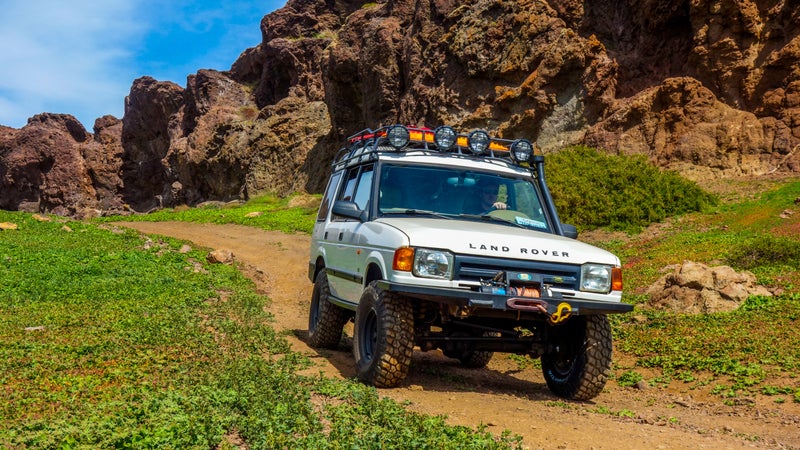
Fifty miles south of town, we spotted the turn-off for the little ocean-side village I remembered from the five minutes I’d spent looking at roads on Google Maps the night before, headed that way, found a dirt track that hugged the coast on the way out of the village,��and then just bumped along off-road until we found a beach we liked. We drove out onto that, found a little curve in the rock that could double with the truck to form a wind break, cracked open some Tecates, and spend the rest of the weekend relaxing.��
Probably 20 or 30 miles from the nearest paved road, there are��no rules in Baja. But driving on beaches��and camping on them is legally permitted, in contrast to pretty much all of California. We built a fire, we cooked food, we listened to music, and Wiley chased sea lions. And we had it all to ourselves, just 300 miles from home. It was the perfect beach camping experience, and all it cost us was two and a half tanks of fuel and less than half a day of driving. You can do it just as easily, and you should.��
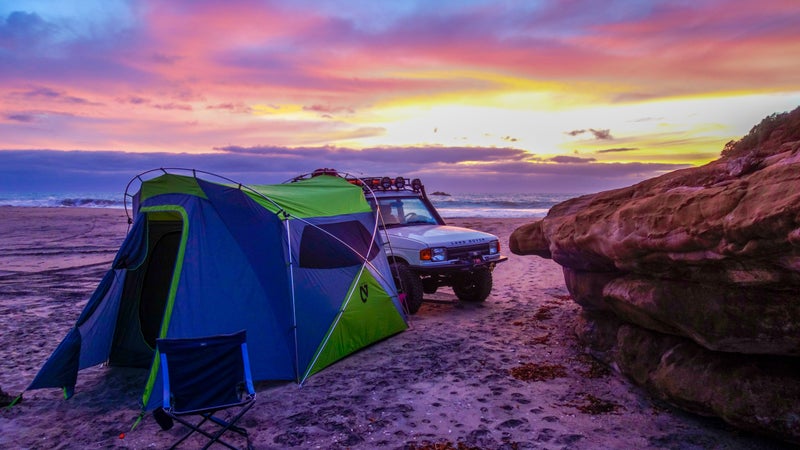
What Type of Vehicle Do I Need?
If you want to stick to civilization, you can take pretty much anything. Highway 1 is in better condition than most streets in Los Angeles. How remote an area you’re able to access��and how trouble-free that access will be��are obviously dependent on the off-road capability of your vehicle. You don’t need something as ridiculous as my new Land Rover. Any four-wheel drive pickup or SUV should be enough to get you somewhere interesting, especially if you fit a good set of all-terrain tires. An AWD crossover like would probably have made it to the beach without too much hassle, thanks to some basic, common-sense modifications aimed at adding peace of mind on dirt roads. But it couldn’t have made it down onto the beach, and it likely wouldn’t have handled the soft sand on it.��
I’d recommend taking a tire repair kit, a quality air compressor, and a set of , no matter what you’re driving. Off-road, punctures should be expected, and you should know how to deal with them. . The MaxTrax give you the ability to drive out of any sticky situation, and double��as shovels. If you do go out on the sand, the absolute best way to avoid getting stuck is to air down your tires. Twenty PSI is a good number that will also��work on rocks, but you can go down as far as 8 PSI on most stock wheels and tires if you really need to.��
You’ll want a vehicle with a large fuel tank, or a five-gallon jerry can. Try to give yourself a 300-mile range��in off-road conditions,��and you won’t run out of fuel.��
Make sure you read .��
You're supposed to have special insurance for your vehicle in Mexico. It won't cover you for any damage,��but it may save you a night in Mexican jail. Allegedly, you can buy it at the border, but our experience demonstrated that it's probably a better idea to purchase it ahead of time online. Google is your friend.��
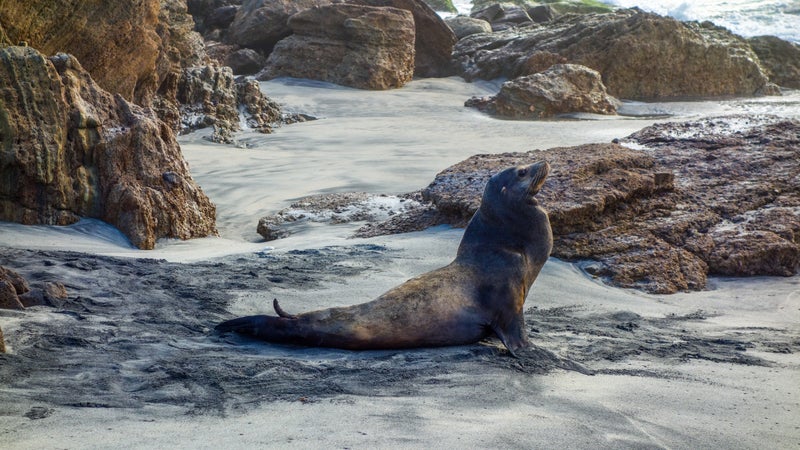
How Do I Find Remote Beaches?
Sorry, but I can’t share the location of the one I camped on—I promised Sinuhe. But it wasn't hard to find, and there are countless others like it. Boot up Google Earth, zoom in on the area of Baja you’d like to travel to, look for beaches, zoom in further, and look for dirt roads leading to those beaches and tire tracks on them. Then just drop a pin, load that and some offline maps into , or save big chunks of Baja for offline use in Google Maps, and you’re good to go.
If you want to surf, go to a Pacific beach. If you want warm, calm water to swim, spearfish, snorkel, and kayak in, go to the Sea of Cortez. Wherever you go, go south of Ensenada.��
Have fun, be flexible, and explore. Be realistic about your vehicle’s capability, and don’t exceed it.��
Should I Be Scared?
No. Every single person we encountered throughout the trip was helpful and friendly. Driving in Baja is no more sketchy than driving in Los Angeles. Be cool, pay attention, make smart decisions��and, just like traveling anywhere else in the world, you’ll be fine. People advise you not to drive at night as��there can be��cows on the road. If you can’t handle a road cow, maybe think twice before leaving the house.��
The entire experience was much easier, much friendlier, and much less risky than visiting, say, .��
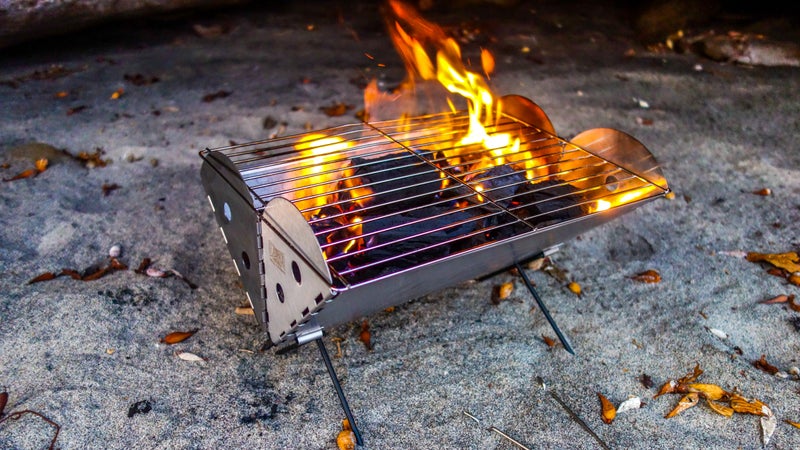
How Much Cash Do I Need?
We took $500 and came home with $400. Pemex, the only gas station you’ll see, takes credit cards, so do the grocery stores. Make sure you tell your bank you’re traveling. Give the gas station attendant a dollar or two for cleaning your windows.��
That breakfast in Ensenada, a tourist trap of a town, was a steep $3. I think we paid $5 to a nice lady at her stand on the side of the highway for three fish tacos, two quesadillas, and a horchata. I’m also pretty sure that was more than she asked for.��
What Paperwork Do I Need for My Dog?��
Call your vet, tell them you're traveling with your dog to Mexico, and make an appointment to drop by for a checkup. They'll give you a certificate of good health and update your dog's rabies vaccine, if necessary. Take all that paperwork with you. Coming back into the U.S., the customs��agent thought Wiley was neat, wanted to pet him, and asked what kind of dog he is. No one at any point asked for any paperwork or gave us any hassle.��
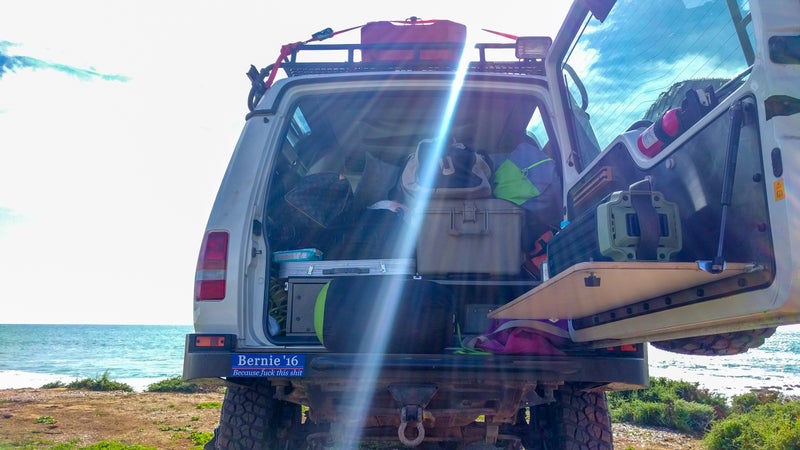
Do I Need to Know Spanish?��
It’d help. I only know enough to make myself sound like an idiot, and I got by just fine.��
Will I Get Sick?��
Buy bottled water because��you need it for camping anyway��(one gallon per-person, per-day, minimum). Only stop for street tacos if there’s a line. Take hand sanitizer (you also need that for camping) as the taps in street-side bathrooms don’t really work. ��
I have a mild case of the runs today, but I’m pretty sure it’s from the sushi I had��here in Hollywood last night.
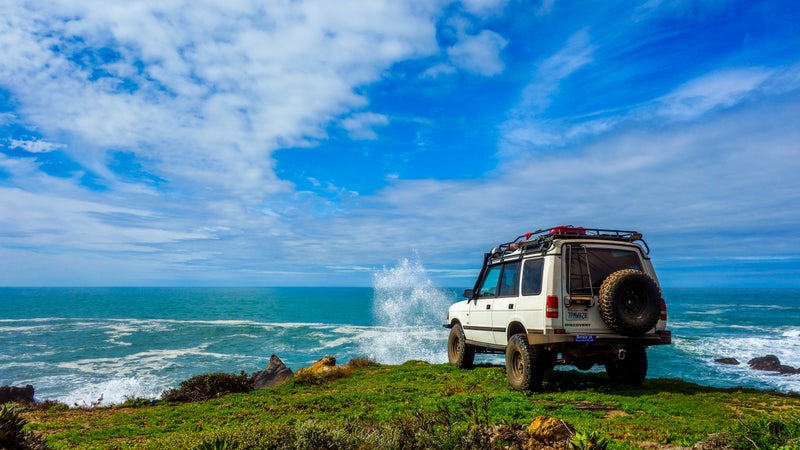
Should I Go?
What’s stopping you? Baja was easier and cheaper for us than visiting most American beaches, and it involved none of the usual regulations or restrictions.��
Have you been to Baja? What travel tips would you share? Were you raped, murdered, and thrown in the ocean?


